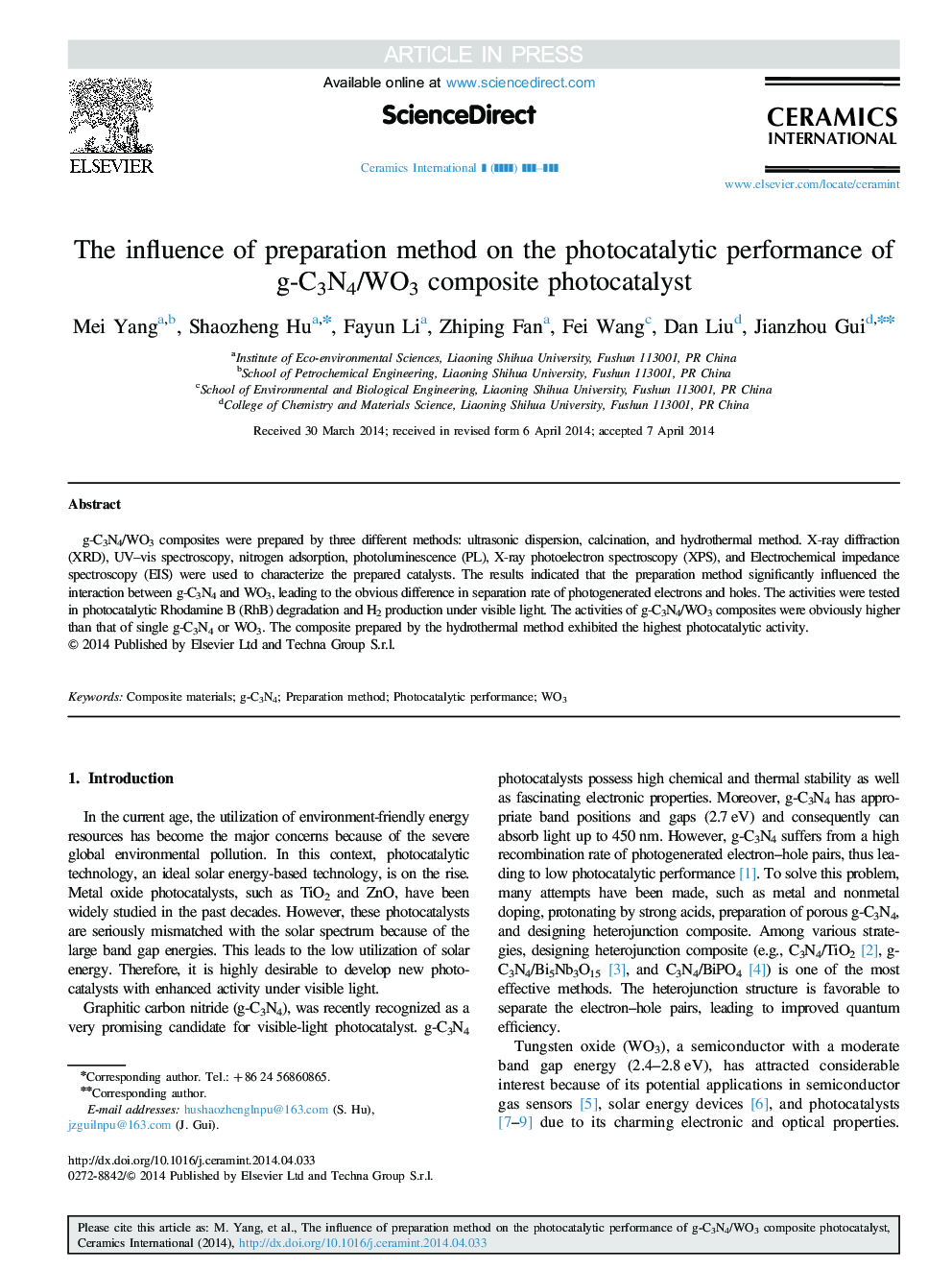| Article ID | Journal | Published Year | Pages | File Type |
|---|---|---|---|---|
| 10625472 | Ceramics International | 2014 | 7 Pages |
Abstract
g-C3N4/WO3 composites were prepared by three different methods: ultrasonic dispersion, calcination, and hydrothermal method. X-ray diffraction (XRD), UV-vis spectroscopy, nitrogen adsorption, photoluminescence (PL), X-ray photoelectron spectroscopy (XPS), and Electrochemical impedance spectroscopy (EIS) were used to characterize the prepared catalysts. The results indicated that the preparation method significantly influenced the interaction between g-C3N4 and WO3, leading to the obvious difference in separation rate of photogenerated electrons and holes. The activities were tested in photocatalytic Rhodamine B (RhB) degradation and H2 production under visible light. The activities of g-C3N4/WO3 composites were obviously higher than that of single g-C3N4 or WO3. The composite prepared by the hydrothermal method exhibited the highest photocatalytic activity.
Related Topics
Physical Sciences and Engineering
Materials Science
Ceramics and Composites
Authors
Mei Yang, Shaozheng Hu, Fayun Li, Zhiping Fan, Fei Wang, Dan Liu, Jianzhou Gui,
